by H.S. Arathi, D. Davidson and L. Mason* (1/18)
Quick Facts…
- Pollinator species include bees, beetles, flies, moths, butterflies, hummingbirds, and bats.
- More than 70% of the world’s flowering plants rely on pollination which is essential for producing fruits and seeds.
- Just like humans and other animals, pollinators need food, water, shelter and space (collectively known as habitat) to support robust populations.
- Creating habitat is something that everyone can do to help support pollinators in their area.
Pollinators are animal species that provide pollination services to plants in natural/wild landscapes, cultivated gardens and agriculture settings around the globe. They have coevolved with plants and the relationship between plants and pollinators is very intricate; each relying on each other for survival. These important services help many plants complete their lifecycles, as well as ensuring food and shelter for humans and other animals for many generations. Pollinators visit flowers to collect nectar and pollen which provides nutrition for their offspring. More than 70% of flowering plants in the world rely on pollinators for fruit and seed production.
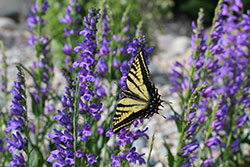
Figure 1a: Swallowtail butterfly. Photo by Lisa Mason |
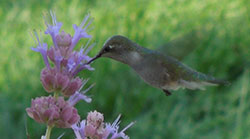
Figure 1b: Hummingbird. Photo by Lisa Mason |
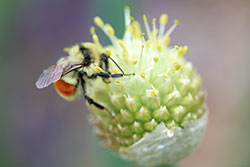
Figure 1c: Bumble bee. Photo by Lisa Mason |
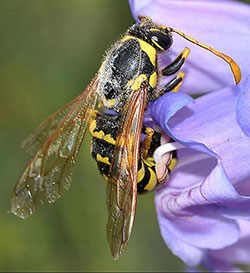
Figure 2: Masarid wasp. Photo by Lynn and Gene Monroehabitats |
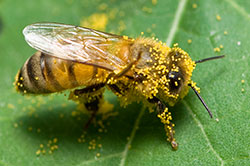
Figure 3: Honey bee covered in pollen grains. Photo by Bruce Leander |
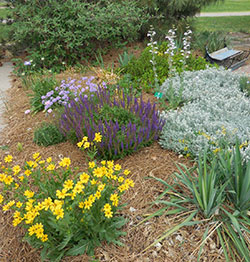
Figure 4: Pollinator habitat. Photo by Deryn Davidson |
Flower Visitor or Pollinator?
Pollinators include bees, wasps, beetles, flies, moths, butterflies, hummingbirds, and bats (Fig. 1a, b and c). However, just because an insect or a bird is visiting a flower, it is not necessarily a pollinator (Fig. 2). Pollinators move between flowers of the same plant species in an orderly fashion, whereas flower visitors move haphazardly among flowers spending very little time within a flower. Even if it does happen that a flower visitor gathers pollen grains on its body, it will not necessarily move to the same flower species, therefore pollination would not occur.
How Pollination Happens
When a pollinator enters a flower, pollen grains from that flower stick to its body (Fig. 3). The pollinator then moves to another flower on the same plant or a different plant, but of the same species. This leads to the transfer of pollen from its body to the next flower resulting in cross-pollination. Pollination is essential for plant reproduction – production of fruits and seeds. It is important to note that not all plants rely on pollinators, some are wind pollinated such as most of our grains: wheat, rice, corn, barley, oats, etc.
What is Pollinator Habitat?
Just like humans and other animals, pollinators need food, water, shelter and space to support robust populations. Pollinator habitat is an area with a variety of flowering plants that provide food and nesting space. The habitat may be a natural setting such as a prairie or a meadow, or it could be manmade where a combination of flowering plants are cultivated specifically to provide nutrition and nesting space for pollinators. Manmade pollinator habitats can be found in a variety of settings, both large and small. Some gardens, such as botanical gardens, may be a collection of plants used for conservation and display purposes and in other cases, gardens may be places where new varieties of flowering plants are being evaluated; these, along with home gardens can serve as pollinator habitat. In most cases, when there are several flowering plants all in bloom, pollinators will be attracted to them (Fig. 4).
If a habitat is intentionally planted to provide nutrition for pollinators, then it needs to contain a mixture of plant species so that bloom times range from early spring to late fall. This ensures that flowers will be available throughout the pollinator activity season. Home gardens, parks, community gardens, prairies and meadows can all provide pollen and nectar. These habitats can be refuges for pollinators foraging through lawns and farmlands that may not have the floral resources they need.
How to Create Pollinator Habitat
You can design a garden that is both beautiful for you and provides habitat (food, water and shelter) for pollinators. An important factor to consider when planning a habitat garden is what type of pollinator you are designing it for. Providing plants that bloom early in the season until late is important for all pollinators, but you should also consider what type of flowers and potential nesting sites to make the garden attractive to different species. For instance, bees prefer a broad range of plants, some of which may provide pollen only, while others provide pollen and nectar. Flower size also matters. Some natives bees are quite large and prefer size appropriate smaller bees will be able to work smaller flowers more effectively. When planting for pollinators it is important to consider the structure of the flowers too. Different species may be more or less inclined to visit a bell shaped flower over a flat disk shaped flower and vice versa. Bees like to focus on flowers of similar structure and so grouping flowers of similar structure together while designing the landscape will work in sync with their preferences. It is best to plant in layers, replicating nature. Begin by establishing a basic structure with trees and shrubs. Then add perennials, grasses, and groundcovers as further layers within the landscape.
Plant list for forage
The list of plants for pollinator habitats will vary for different parts of Colorado as climatic conditions, soil quality, elevation and water availability are highly variable. Here are some suitable plants that are grouped based on the flowering season. Again, it is important to have plants that bloom from early spring through summer and as late into the fall as possible to provide continual resources for pollinators. This list may be updated periodically so check back before planting season and make sure plants you choose are appropriate to your area.
Early-Season
- Nodding onion – Allium cernuum
- Serviceberry – Amelanchier alnifolia
- Winecups – Callirhoe involucrata
- Sulphur flower – Eriogonum umbellatum
- Wallflower – Erysimum spp.
- Prairie smoke – Geum triflorum
- Blue Flax – Linum lewisii
- Blue mist and firecracker penstemon – Penstemon eatorii and P. virens
- Pasque flower – Pulsatilla patens
- Flowering fruit trees including apples, cherries, peaches and plums
- Penstemons (many native and cultivar options, check with local nursery)
- Yarrow – Achillea millefolium
Mid-Season
- Lead Plant – Amorpha canescens
- Asters (many native and cultivar options, check with local nursery)
- Pearly everlasting – Anaphalis margaritacea
- Showy milkweed – Asclepias speciosa
- Harebells – Campanula rotundifolia
- Blanket flower – Gaillardia aristata
- Salvias (many native and cultivar options, check with local nursery)
- Flowering trees including willows, black locust, linden and honey locust
Late-Season
- Blue Giant Hyssop – Agastache foeniculum
- Rocky Mountain bee plant – Cleome serrulata
- Plains Coreopsis – Coreopsis tinctoria
- Common sunflower – Helianthus annuus
- Hairy False Goldenaster – Heterotheca villosa
- Goldenrod – Solidago spp.
- Rabbitbrush – Chrysothamnus nauseosus
- Chokecherry – Prunus virginiana
- Boulder raspberry – Rubus deliciosus
Location of the garden is extremely important. Most pollinators generally prefer sunny areas and large connected habitats are better than small patchy ones. Before planting, determine if you can connect your front yard and your backyard through the use of flowering plants and plan accordingly. It is important to have a variety of flowering species planted as groups/swaths in the landscape rather than as single plants. This allows the pollinators to work one area more thoroughly and efficiently, rather than having to move around a great deal to find plants of the same species.
Challenges for Pollinators
There are a variety of factors facing pollinators which interact with each other. Intensive agriculture with increased monocropping, several rotations in the year, indiscriminate and improper use of chemicals to reduce weeds and pests, and destruction of natural habitats are some of the most important factors. These, in combination, compromise the nutrition and health of our pollinators, leaving them to become vulnerable to many diseases and pests. Your efforts to create habitat for these important species can greatly contribute towards the ongoing efforts for the protection and conservation of all pollinators.
The important thing to remember is that any habitat is better than no habitat. If done correctly, creating a beautiful garden for yourself can have far reaching benefits that positively impact the greater ecosystem that surrounds you.
References
Attracting Native Bees to Your Landscape, Colorado State University Fact Sheet # 5.615
Websites for other plant options:
- The Xerces Society: (https://xerces.org/pollinator-conservation/plant-lists/)
- USDA NRCS: (https://www.nrcs.usda.gov/wps/portal/nrcs/detailfull/national/plantsanimals/pollinate/?cid=NRCS143_022326)
- NAPPC/Pollinator Partnership: (http://pollinator.org/guides)
*H.S. Arathi (Arathi Seshadri), Department of Soil and Crop Sciences, D. Davidson: CSU Extension, Boulder County, L. Mason: CSU Bioagricultural Sciences and Pest Management Department, 1/18.





